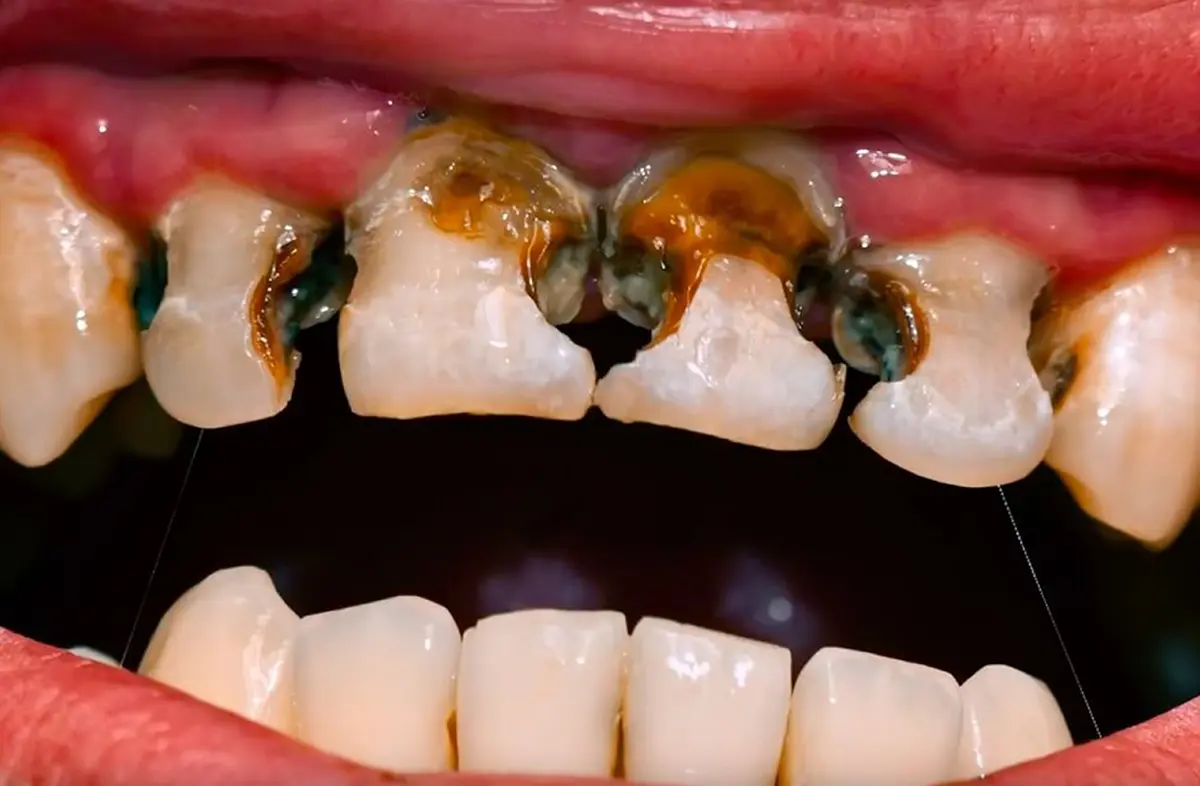As its name suggests, there are plenty of negative medical problems that can come with tooth decay. Between cavities, abscesses or even total tooth loss, the tooth decay process is caused by the presence of bacteria that live in dental plaque.
Tooth decay occurs in several stages, spanning from initial demineralisation to painful dental abscesses. Read on for more information about each of the stages of tooth decay, and some helpful tips on how to prevent this painful and uncomfortable process from happening to you.
Stage 1: Initial demineralisation
The outer layer of a tooth is coated in enamel. Enamel is comprised mostly of minerals, which, when exposed to acids produced by plaque bacteria, can lose its minerals and begin to decay. This stage of initial demineralisation often appears as a white spot on a tooth, and is an early sign of tooth decay.
Stage 2: Enamel decay
As the tooth decay process continues, the enamel will break down further, and the initial white spot may darken to reveal a brownish hue. At the same time, small cavities may appear in your tooth. Pay a visit to your dentist to have these cavities filled in a timely manner.
Stage 3: Dentin decay
Dentin is the tissue that sits underneath a tooth’s enamel. Dentin is soft and extremely sensitive, so by the time decay reaches the dentin layer, the overall tooth decay process speeds up. When dentin is affected by tooth decay, you may begin experiencing sensitivity on your teeth, particularly with hot or cold drinks.
Stage 4: Pulp damage
A tooth’s pulp is its innermost layer that contains blood vessels and nerves that keep your teeth healthy. Once decay reaches it, the pulp can start to swell up and place pressure on surrounding nerves. This can lead to extreme tooth pain.
Step 5: Abscess
Once tooth decay has advanced into the pulp, an infection can be caused by infiltrating bacteria. This increased inflammation can lead to a pocket forming at the base of your tooth, which is called an abscess. A tooth abscess can be extremely serious and require immediate medical treatment. It can cause severe pain into your jaw, face and neck.
How to avoid tooth decay
There are a few prevention strategies that can lessen your chance of potential tooth decay. These include regular dentist check-ups, brushing your teeth regularly and effectively, and limiting sweets or foods with a high volume of sugar. In broader terms, maintaining a healthy and structured oral hygiene schedule is vital in preventing tooth decay or other tooth damage.
Treatments for cavities
The treatment that’s recommended for tooth decay can depend on its stage. Let’s take a look at the different treatment options based on the progression of tooth decay.
Initial demineralization
This earliest stage of tooth decay can actually be reversed before more permanent damage occurs. This can be achieved by treating the teeth with fluoride.
You can receive a fluoride treatment at your dentist’s office. It’s often applied to your teeth in the form of a gel or varnish. Fluoride works to strengthen enamel, making it more resistant to the acids produced by plaque bacteria.
Fluoride can also be found in some types of toothpastes and is often present in tap water. About 74 percent of Americans that get their tap water from a community water system receive fluorinated water.
Enamel decay
When tooth decay enters this stage, cavities are often present. Fillings are used to treat cavities.
When giving a filling, your dentist will first use a tool to clear away any areas of decay. They’ll then fill the hole with a material such as resin, ceramic, or dental amalgam. This material is typically the same color as your tooth.
Dentin decay
Because dentin is softer than the enamel, decay moves at a faster rate when it reaches this stage. If identified early, dentin decay may be treated with a filling. In more advanced cases, placement of a crown may be required.
A crown is a covering that covers the top portion of your tooth above the gums (also called the crown of the tooth). The decayed area is removed before the crown is placed. Some healthy tooth tissue may be removed as well to ensure that the crown fits well to your tooth.
Pulp damage
When tooth decay has reached the pulp, you’ll often need a root canal. In a root canal, the damaged pulp is removed. The tooth cavity is then cleaned and filled in. A crown is placed on the affected tooth.
Abscess
If an abscess has formed in your tooth, your dentist will likely perform a root canal to remove the infection and seal the tooth. In severe cases, the affected tooth may need to be removed completely.
Antibiotics may also be prescribed to help treat an abscess. These are medications that kill bacteria.
Prevention
Practicing good oral hygiene is an important part of preventing tooth decay. Below are some strategies you can implement to help avoid damage to your teeth from tooth decay.
- See your dentist regularly: Your dentist can help to identify and treat tooth decay before it gets worse. Be sure to see your dentist regularly for routine teeth cleanings and oral exams.
- Brush your teeth: It’s generally recommended that you brush your teeth at least twice per day and after meals. Try to use a fluorinated toothpaste.
- Limit sweets: Try to avoid consuming foods or drinks with a high amount of sugar. Some examples include candies, cookies, and soft drinks.
- Drink water from the tap: Most tap water contains fluoride, which can help keep your enamel strong and protect it from decay.
- Avoid snacking: Aim to limit between-meal snacks, as this can give the bacteria in your mouth even more sugars to convert into acids.
- Ask about sealants: Sealants are a thin coating of plastic applied to the tops of your back teeth (molars). Molars are important for chewing, but food particles can also get trapped in their grooves. A sealant covers the surface of the molar, preventing this from happening.
When to see a dentist
If tooth decay is in its early stages, you may not experience any symptoms. This is why regular visits to your dentist are important. Your dentist can help to identify and address the early stages of tooth decay before they worsen.
Make an appointment with your dentist if you experience tooth sensitivity, tooth pain, or swelling in or around your mouth. These may be signs of the later stages of tooth decay or another dental condition that needs attention.
Protect your teeth with Serenity International Dental Center
Concerned you’re experiencing tooth decay? Here at Serenity International Dental Center, we offer a wide range of options when it comes to tooth fillings. And, once one of our highly trained dentists has completed your tooth filling, we’ll provide you with comprehensive aftercare instructions. If you’re in need of a tooth filling or repair due to tooth decay, book an appointment at Serenity International Dental Center.



